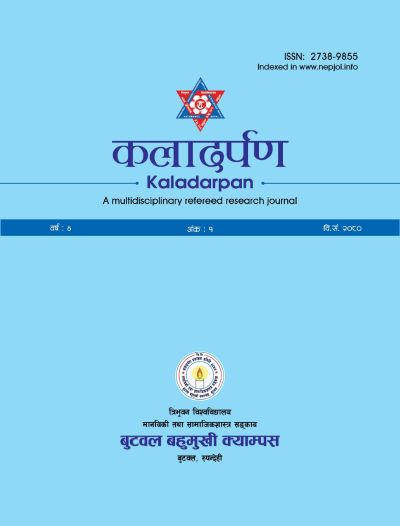Correlations of Loneliness among Nepalese Senior Citizens
DOI:
https://doi.org/10.3126/kaladarpan.v4i1.62868Keywords:
Aging in Nepal, correlates of loneliness, loneliness, Nepali older people, young senior citizensAbstract
The Proportion of the elderly in Nepal is increasing rapidly. Senior citizens are prone to spirits of loneliness. It comprises both solitary life and life with the potential to participate in interaction with others. The purpose of the study was to analyze the loneliness situation among Nepalese young senior citizens. The subjects (n = 513) inhabitants of Butwal sub-metropolitan city having an age range of 60 to 74 (mean/SD = 65.86/4.20) years were female dominated (52.6 percent). Data were collected through frontal interviews using 20 statements of the loneliness scale developed by the University of California, Los Angeles (UCLA). The data were analyzed using correlation vicariate, multiple regression analysis, and independent sample t-test. The study observed that 29.63 percent reported experiencing low levels of loneliness, 21.25 percent experienced moderate levels, and 49.12 percent reported high levels of loneliness. These levels of loneliness were categorized based on the scoring range: scores below 30 indicated low loneliness, scores of 30 to 39 indicated moderate loneliness, and scores of 40 or higher indicated high levels of loneliness. A statistically significant correlation was found between feelings of loneliness, sex, family type, marital status, education, social participation, and property ownership. Results of multiple regression analysis displayed property ownership, marital status, type of family, and sex standing as significant factors of loneliness. The present results indicate remarkable Nepalese young senior citizens were experiencing loneliness. It is necessary to assess the levels of loneliness of young senior citizens and pursue an intervention to reduce these problems.




